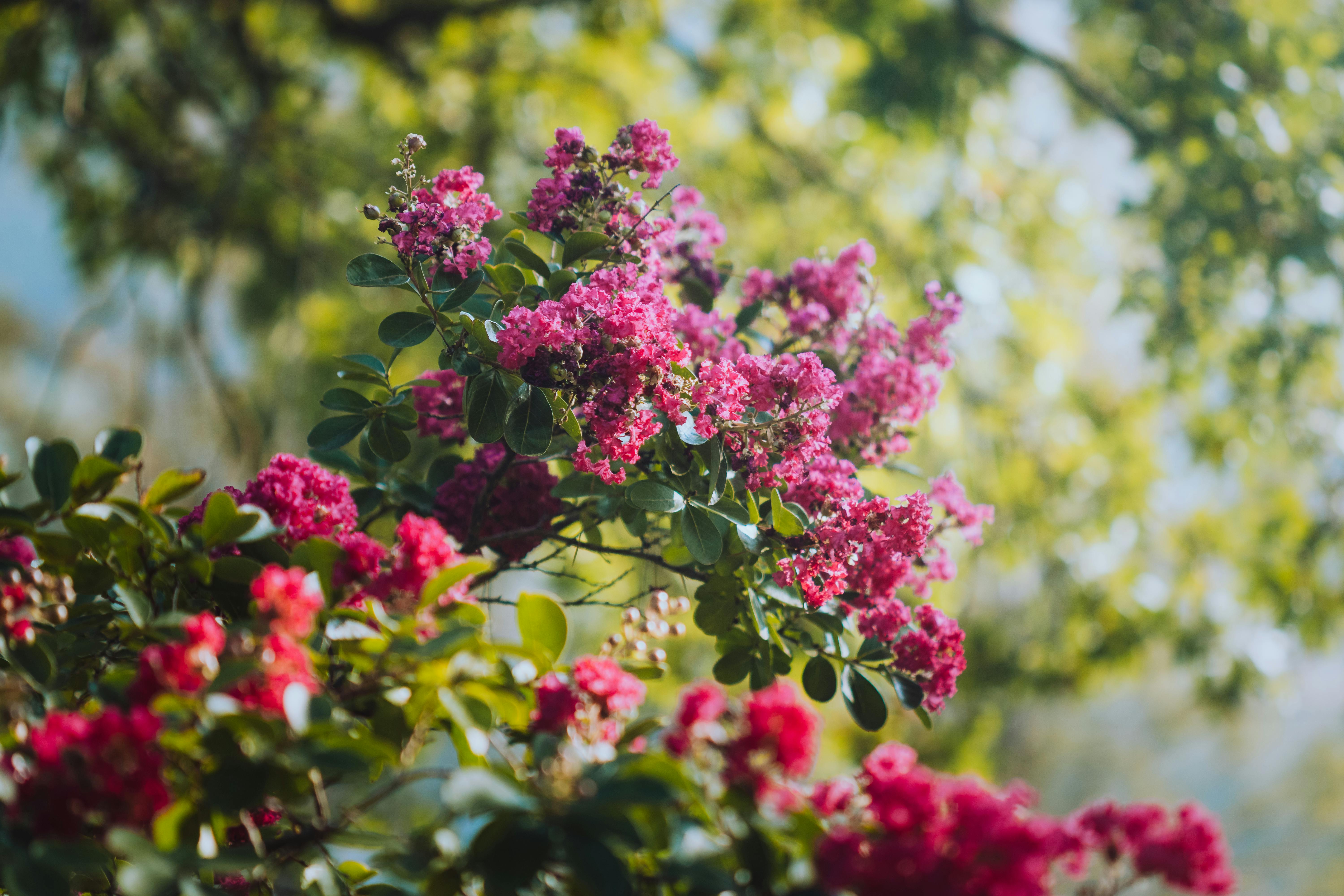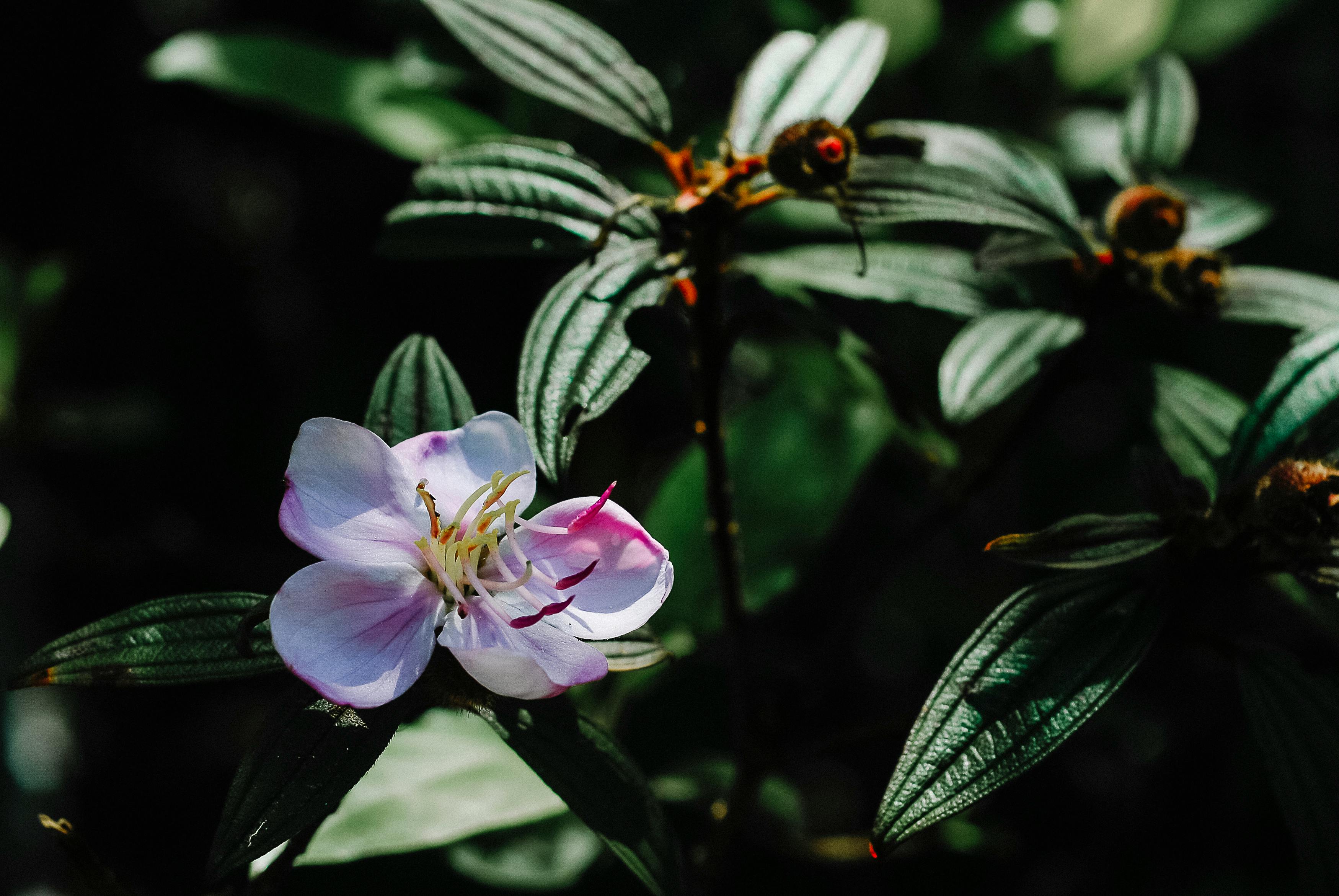The myrtle plant is a flowering shrub that belongs to the Myrtaceae family. It is a hardy, evergreen shrub native to Europe, Africa and Asia, but has been widely cultivated in other parts of the world. The myrtle plant produces small, fragrant white flowers and dark green leaves with a pleasant aroma. It is an attractive ornamental plant and its berries are edible. Myrtle can be used in cooking or as an herbal remedy to treat various ailments.Myrtle is a common name for several evergreen shrubs or small trees in the genus Myrtus, with around two to five species. It is native to the Mediterranean region and is used as an ornamental plant in gardens. Myrtle has dark green, glossy leaves, white flowers and aromatic berries.
Contents
Myrtle Plant
Myrtle plant is an evergreen shrub that is native to the Mediterranean region. It produces highly fragrant, white flowers throughout the summer, and its berries are a popular culinary ingredient. It can be used in a variety of ways, from being brewed as a tea to being used in perfumes and cosmetics.
Myrtle plant has been used for centuries as an herbal remedy for various ailments including digestive issues, skin conditions, and respiratory problems. It is also believed to have anti-inflammatory properties and may help boost the immune system. In addition to its medicinal uses, it is often used as an ornamental plant due to its fragrant flowers and lush foliage.
The leaves of the myrtle plant can be dried and ground into a powder which can be used as a flavoring in dishes such as stews and soups. The berries can also be cooked or eaten raw, which makes them a versatile ingredient for many recipes. The essential oils extracted from myrtle plants are often used in aromatherapy treatments or added to perfumes and lotions for their pleasant scent.
Overall, myrtle plants are a versatile species with many uses ranging from medicinal remedies to culinary ingredients. Their fragrant flowers and attractive foliage make them attractive additions to any garden or landscape design.
Where Does Myrtle Plant Grow?
Myrtle plants are indigenous to tropical and subtropical regions, where they are often found growing in wet areas. These evergreen shrubs and small trees are popular for their fragrant flowers, as well as for their attractive foliage. In the wild, myrtle plants can be found growing in regions ranging from southern Europe, through North Africa and across to India.
Myrtle plants have adapted well to cultivation, and can now be found in gardens around the world. They prefer slightly acidic soil and full sun exposure, but will tolerate partial shade. As with any plant, adequate water is essential for healthy growth. Myrtle plants need regular watering during the growing season, but should not be over-watered; if given too much water they may become susceptible to fungal disease.
In the United States, myrtle plants are popular ornamental shrubs in California and Florida. They thrive in Mediterranean climates with mild winters and hot summers, making them an excellent choice for those looking to add a touch of greenery to their gardens all year round. Many cultivars of myrtle have been developed over the years for a range of different uses including hedging, topiary work and rock gardens.
Myrtle plants also make wonderful container specimens; when grown indoors they require bright light but no direct sunlight exposure. If your home is too warm or dry during winter months you may need to increase humidity levels by misting your plant regularly or placing it on a tray of wet pebbles. With the right care your myrtle plant will remain healthy and beautiful all year round!
Myrtle Plant Benefits
The myrtle plant is a versatile, evergreen shrub that has many benefits. It is known for its aromatic flowers, which have a spicy and sweet scent. The leaves are also fragrant and can be used in traditional medicines and as a culinary herb. The berries of the myrtle plant are also edible and can be used to make jams, jellies, syrups, and sauces. In addition to its culinary uses, the myrtle plant has many other benefits. It can be used as a landscaping plant to provide shade, shelter, and windbreaks for your garden or yard. The myrtle plant is also known for its medicinal properties and is used to treat various ailments such as colds and flu. It is also believed to have anti-inflammatory properties that may help reduce inflammation in the body. Finally, the myrtle plant is an important source of nectar for bees and other pollinators which helps support healthy ecosystems around the world.
Types of Myrtle Plant
Myrtle is a genus of flowering plants in the family Myrtaceae, which includes species of shrubs and trees that are native to the Mediterranean region and other parts of the world. The most common species of myrtle is the Common Myrtle (Myrtus communis), which is a small evergreen shrub with fragrant white flowers. Other types include the Brazilian Myrtle (Myrcianthes brasiliensis), which is a small tree native to Brazil, and the Chinese Myrtle (Myrica rubra), which is a large evergreen tree native to East Asia.
The Australian Myrtle (Melaleuca quinquenervia) is an evergreen tree native to Australia, and it has become popular as an ornamental species in many parts of the world. This species has fragrant yellow-white flowers, and its leaves are used in traditional medicine. Another popular ornamental myrtle species is Myrtus luma, which is native to Chile and has bright red-orange flowers.
The Lemon-scented Myrtle (Backhousia citriodora) is an Australian native that has fragrant lemon-scented foliage, making it popular for use as a hedge or screen plant. The Lemon Myrtle (Backhousia citriodora) is also widely used for its essential oil, which has antiseptic properties and can be used in cooking or aromatherapy.
The Willow Myrtle (Agonis flexuosa) is another Australian native that can be used as an ornamental shrub or small tree. This species has long evergreen leaves with white flowers that have a sweet smell similar to honey. Finally, the Broad-leaved Paperbark Tree (Melaleuca quinquenervia) is an Australian native that can reach up to 40 feet tall and has white papery bark that peels off in strips.

How to Plant a Myrtle?
Planting a myrtle is not a difficult task and can be done relatively easily with some preparation. The first step is to choose the right location for your myrtle. You’ll want to find a spot that gets plenty of sun and is well-draining, as myrtles do not like soggy soil. Once you have chosen the ideal spot, you will need to prepare the soil. Use a shovel or tiller to work up the soil until it is loose and easy to work with.
Next, you will need to dig a hole that is twice as wide as the root ball of your myrtle. If you are planting multiple myrtles in the same area, be sure to space them at least three feet apart so they have enough room to grow. Before planting, check your myrtle for any signs of disease or pests and remove any dead leaves or stems from the plant.
Once your hole is ready, place your myrtle into it and begin filling it with soil. Make sure that all of the roots are covered with soil and then gently press down around the base of the plant so that it is firmly planted into its new home. Water your newly planted myrtle thoroughly and continue watering every couple of days until it becomes established in its new environment. Add mulch around the base of the plant to help keep moisture in and weeds out.
With proper care and maintenance, your myrtle should thrive for years to come!
Growing Myrtle in a Pot
Myrtle is an attractive evergreen shrub that can be grown in a variety of climates and soils. It is especially well suited for growing in pots and containers, making it an ideal choice for gardeners with limited space. When grown in a pot, myrtle can be pruned to any desired size or shape, allowing it to fit into even the smallest garden. Growing myrtle in a pot requires some extra care and attention, but the results are well worth the effort.
The first step in growing myrtle in a pot is selecting the right pot and soil. Myrtle needs well-drained soil that is slightly acidic, so choose a potting mix that contains composted pine bark or peat moss. The pot should be large enough to allow for adequate drainage and root development, as myrtle has an extensive root system. A container that is 12 inches deep and at least 18 inches wide should suffice.
When planting myrtle in a pot, make sure to place it in an area that receives plenty of sunlight throughout the day. Myrtle prefers at least six hours of direct sunlight each day, so choose a spot where it will receive adequate light exposure year round. Once planted, water regularly, keeping the soil moist but not soggy. Fertilizing with an all-purpose fertilizer every other month will help keep your myrtle healthy and vigorous.
Myrtle requires regular pruning to maintain its shape and size within the confines of the container. Prune during the spring months when new growth appears and again after flowering has finished. Be sure to use sharp pruning shears to ensure clean cuts and avoid tearing of branches or stems. As with any plant grown in containers, check regularly for pests such as aphids or spider mites.
With proper care and attention, myrtle can thrive when grown in pots or containers. Its attractive foliage provides color year round, making it an ideal choice for those with limited growing space who still want to enjoy its beauty.
Care
Myrtle plants are popular evergreen shrubs that can be grown in a variety of climates and soil types. Proper care is essential to keeping a myrtle plant healthy and ensuring it grows to its fullest potential. To ensure your myrtle plant thrives, water it deeply but infrequently to avoid over-watering. The soil should be kept consistently moist, but not wet or soggy. Fertilize once or twice a year with an all-purpose fertilizer, using the manufacturer’s instructions for the correct amount to use. Prune the myrtle plant in late winter or early spring to maintain its desired shape and size.
Maintenance
When planted in an area with full sun exposure and well-drained soil, myrtle plants typically require minimal maintenance. Mulch around the base of the plant to help retain moisture and reduce weeds. It is also important to monitor for pests such as aphids and spider mites, which can damage the leaves of the plant if left unchecked. In addition, watch for signs of disease such as powdery mildew or leaf spot, which can occur if the plant is exposed to too much moisture or waterlogged soils. Treat any affected areas with an appropriate fungicide according to manufacturer’s instructions.

Conclusion
Myrtle is a genus of flowering plants belonging to the Myrtaceae family. It is native to many parts of the world, including Europe, Asia, and Africa. Myrtle has a wide range of uses in the fields of medicine, cosmetics, perfumery, and decoration. Its essential oil has antibacterial and antifungal properties and is used in traditional medicine to treat a variety of ailments. Myrtle also has applications in cosmetics as it can be used in creams, lotions and shampoos. Its pleasant scent makes it an ideal ingredient for perfumes and fragrances. Lastly, Myrtle can be used for ornamental purposes due to its attractive foliage and flowers.
In conclusion, Myrtle is a versatile plant with many applications in the fields of medicine, cosmetics, perfumery and decoration. Its antibacterial and antifungal properties make it a valuable ingredient for traditional medicine. Its pleasant scent also makes it suitable for use as an ingredient for perfumes and fragrances. Moreover, its attractive foliage and flowers make it suitable for ornamental purposes.

0 Comments